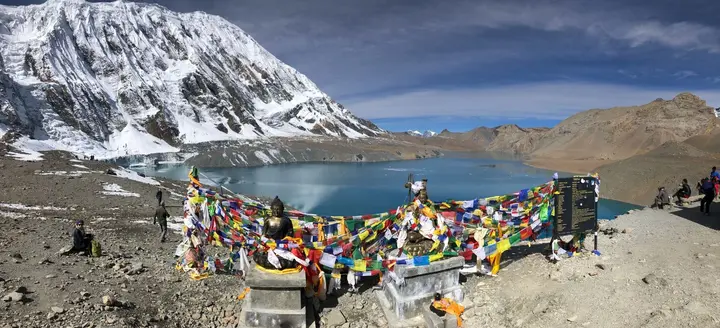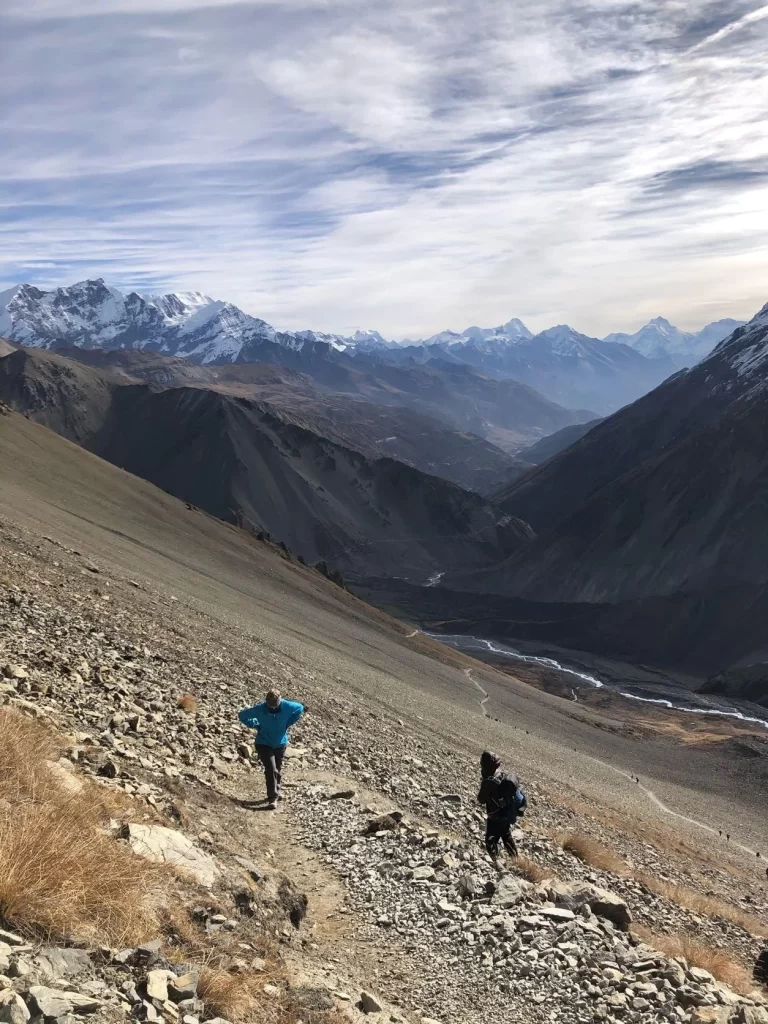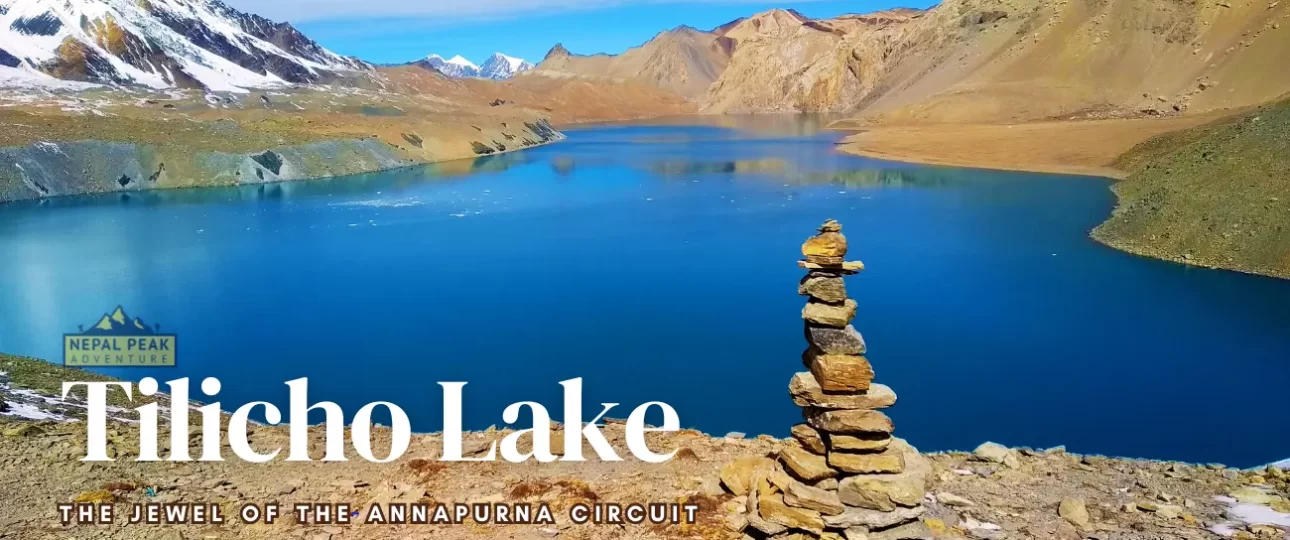Exploring Tilicho Lake: One of the World’s Highest Lakes
Tucked away in the Annapurna range of the Himalayas, Tilicho Lake is a stunning and pristine high-altitude lake that draws adventurers and nature enthusiasts from around the globe. With its mesmerizing blue waters set against the backdrop of towering snow-capped peaks, Tilicho Lake is a hidden gem that promises an unforgettable experience. Whether you’re an avid trekker or simply someone who appreciates natural beauty, Tilicho Lake offers a unique and awe-inspiring journey.
Geographical Location of Tilicho Lake
Tilicho Lake is situated in the Manang District of Nepal, within the Annapurna Conservation Area. The lake is part of the Annapurna Circuit Trek, one of the most popular trekking routes in Nepal. Its remote location adds to its allure, offering trekkers a sense of solitude and serenity amidst the rugged Himalayan landscape. Nearby landmarks include the Thorong La Pass and the Annapurna massif, making the journey to Tilicho Lake a scenic and adventurous endeavor.

What is the altitude of Tilicho Lake?
Perched at an impressive altitude of 4,919 meters (16,138 feet) above sea level, Tilicho Lake is considered one of the highest lakes in the world. The lake spans approximately 4 kilometers (2.5 miles) in length and 1.2 kilometers (0.75 miles) in width, with depths reaching up to 85 meters (279 feet). Its high altitude and expansive size contribute to its unique and dramatic landscape, making it a must-visit destination for high-altitude trekkers.
Historical Significance
Tilicho Lake holds historical and cultural significance that dates back centuries. It is mentioned in ancient Hindu scriptures, including the Ramayana, where it is referred to as the divine lake created by Lord Vishnu. The lake is also associated with various myths and legends, adding a layer of mystique to its already captivating presence. These stories enhance the spiritual experience of visiting Tilicho Lake, providing a deeper connection to the region’s rich cultural heritage.
Natural Beauty
The natural beauty of Tilicho Lake is unparalleled. Surrounded by the majestic peaks of the Annapurna range, the lake’s clear blue waters reflect the sky and the mountains, creating a surreal and tranquil atmosphere. The area around the lake is home to diverse flora and fauna, including rare Himalayan plants and animals. Trekkers may encounter blue sheep, snow leopards, and various species of birds, adding to the allure of this remote paradise.
Tilicho Lake Trek
The trek to Tilicho Lake is an adventure of a lifetime. Typically starting from the town of Manang, the trek takes you through diverse landscapes, including lush forests, alpine meadows, and rocky terrains. The journey is challenging but rewarding, with breathtaking views and unique experiences at every turn. Trekkers will pass through traditional Nepalese villages, encounter local cultures, and witness the stunning beauty of the Himalayas up close.
How difficult is the Tilicho Lake trek?
The Tilicho Lake trek is considered moderately to highly challenging, depending on your experience and fitness level. The high altitude, steep ascents, and unpredictable weather conditions can make the trek demanding. It’s essential to be physically fit and mentally prepared for the journey. Acclimatization days are recommended to adjust to the altitude and reduce the risk of altitude sickness. Despite the challenges, the sense of accomplishment and the views at the end make it all worthwhile.

What is the best time to visit Tilicho Lake?
The best time to visit Tilicho Lake is during the pre-monsoon (March to May) and post-monsoon (September to November) seasons. During these months, the weather is generally stable, and the skies are clear, offering the best views of the surrounding mountains. The temperature is also more moderate, making the trek more comfortable. Visiting during these periods ensures that you can fully appreciate the beauty and tranquility of Tilicho Lake without the challenges posed by harsh weather conditions.
Cultural Significance
Tilicho Lake holds great cultural significance for the local communities. It is considered a sacred site, and many pilgrims visit the lake for spiritual reasons. The lake is also central to various local festivals and traditions, adding a rich cultural dimension to the trekking experience. Understanding and respecting these cultural aspects enhances the overall experience and fosters a deeper connection with the people and the land.
Accommodation Options
There are several accommodation options available for trekkers heading to Tilicho Lake. In the lower regions, you can find teahouses and lodges that offer basic amenities such as food, shelter, and warmth. As you ascend, the options become more limited, and many trekkers opt to camp near the lake. It’s essential to plan your accommodations in advance, especially during peak trekking seasons, to ensure a comfortable and safe journey.
Necessary Permits
Trekking to Tilicho Lake requires several permits. The most important ones are the Annapurna Conservation Area Permit (ACAP) and the Trekkers’ Information Management System (TIMS) card. These permits are essential for entry into the conservation area and for tracking the movement of trekkers for safety purposes. Obtaining these permits is relatively straightforward, and they can be acquired in Kathmandu or Pokhara before starting your trek.
Guided Tours vs. Solo Trekking
Deciding between a guided tour and solo trekking depends on your experience and preference. Guided tours offer the advantage of local knowledge, logistical support, and enhanced safety, making them a good option for first-time trekkers or those unfamiliar with the region. Solo trekking, on the other hand, offers more flexibility and a sense of adventure but requires thorough preparation and self-sufficiency. Weighing the pros and cons of each option will help you make the best decision for your trek.
What to Pack?
Packing for the Tilicho Lake trek requires careful consideration. Essential items include warm clothing, a sturdy pair of trekking boots, a high-quality sleeping bag, and a reliable backpack. Additionally, packing light but nutritious food, water purification tablets, and basic medical supplies is crucial. Ensuring you have the right gear can make the difference between an enjoyable trek and a challenging ordeal.
Safety Tips
Safety should be a top priority when trekking to Tilicho Lake. Key safety tips include staying hydrated, taking time to acclimatize, and being aware of the symptoms of altitude sickness. It’s also important to have a good map, a reliable means of communication, and knowledge of emergency contacts and procedures. Trekkers should avoid venturing off marked trails and be mindful of the weather conditions, which can change rapidly in the mountains.
What is the cost of Tilicho Lake Trek for Nepali?
The cost of the Tilicho Lake trek for Nepali citizens is generally lower compared to international trekkers. Here’s a breakdown of the typical expenses:
Permits:
Annapurna Conservation Area Permit (ACAP): NPR 100
Trekkers’ Information Management System (TIMS) card: NPR 1,000
Accommodation:
Teahouses/Lodges: NPR 300 – 500 per night
Camping (if chosen): Costs may vary, usually including equipment rental and food.
Food:
Meals: NPR 200 – 600 per meal, depending on the location and menu.
Transportation:
Bus/Jeep from Kathmandu/Pokhara to starting point (Manang): NPR 1,500 – 3,000
Guides and Porters (if required):
Guide: NPR 2,000 – 3,000 per day
Porter: NPR 1,200 – 2,000 per day
Miscellaneous:
Equipment rental (if needed): NPR 500 – 1,000 per day
Snacks and drinks: NPR 100 – 300 per day
Total Estimated Cost:
Basic Trekking (without guide/porter): NPR 15,000 – 25,000
With Guide and Porter: NPR 35,000 – 45,000
These costs are approximate and can vary based on individual preferences and circumstances. It’s always a good idea to budget a bit extra for unforeseen expenses.
Conclusion
Tilicho Lake is more than just a destination; it’s an experience that combines natural beauty, cultural richness, and adventurous spirit. Whether you’re drawn by the serene blue waters, the challenge of the trek, or the mystical stories that surround the lake, a visit to Tilicho Lake is sure to leave a lasting impression. So, lace up your boots, pack your backpack, and get ready for an adventure that will take you to the heart of the Himalayas.
FAQs
1. Is Tilicho Lake the highest lake in the world?
No, Tilicho Lake is one of the highest lakes in the world, but there are higher lakes, such as Ojos del Salado’s crater lake in the Andes.
2. How long does it take to complete the Tilicho Lake trek?
The trek typically takes around 10 to 12 days, depending on the starting point and the trekker’s pace.
3. Are there any age restrictions for the trek?
There are no specific age restrictions, but trekkers should be in good health and physically fit to handle the challenging conditions.
4. What is the cost of the Tilicho Lake trek?
The cost can vary widely depending on factors such as guided tours, permits, accommodation, and personal expenses. On average, it can range from $500 to $1500.
5. Can you swim in Tilicho Lake?
Swimming in Tilicho Lake is not recommended due to its high altitude and extremely cold water temperatures.



